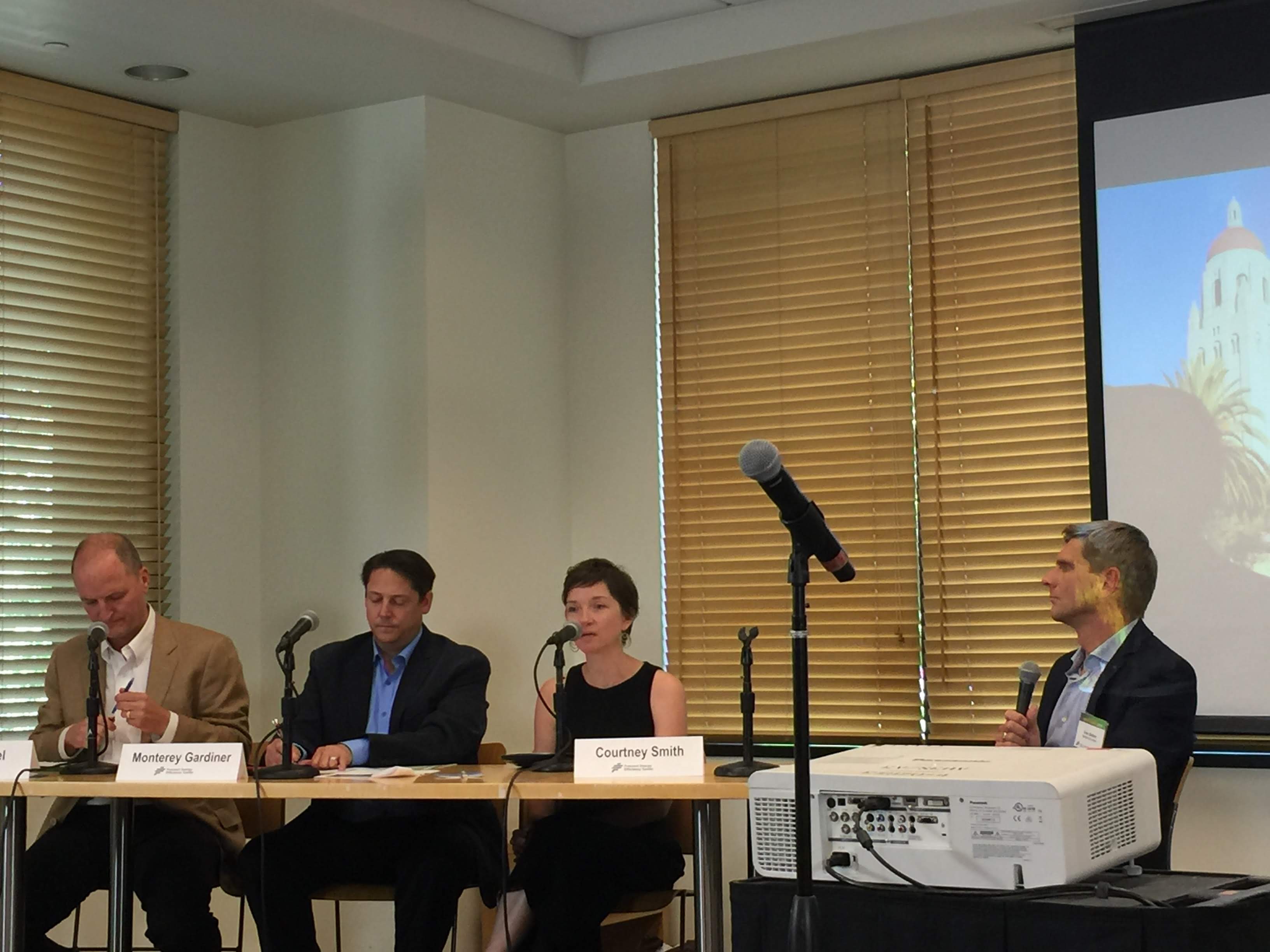Attendees at the annual Silicon Valley Energy Summit (SVES) on Thursday, Jun. 21 developed plans that may enhance energy efficiency, both in the United States and worldwide. The event, which occurs annually, addressed contemporary issues with energy that affect both individuals and firms.
Held at the Frances C. Arrillaga Alumni Center and featuring more than 40 keynote speakers and around 350 attendees, the conference explored topics ranging from energy and climate to cybersecurity.
The event was organized by the Precourt Energy Efficiency Center (PEEC) and a planning committee headed by management science and engineering professor and Hoover Fellow James L. Sweeney Ph.D. ’71.
Stanford graduates, entrepreneurs and subject matter experts participated in the summit’s panel sessions and TED-style talks. Notable speakers included Lawrence Berkeley National Laboratory research engineer Doug Black, BMW researcher Monterey Gardiner and Dinesh Sharma, who is the head of products at Juniper Intelligence, a data analytics firm.
In the panel “New Tools For Managing Your Climate Risk,” speakers touched on issues related to the damage caused by poor infrastructure and methods for preventing them.
Specifically, the panel addressed flooding concerns at the San Francisco International Airport (SFO) due to rising sea levels. According to associate principal of energy and resource sustainability at professional services firm Ayup Cole Roberts, SFO is more vulnerable to sea level rise than most other airports because of its location and eroding sea wall.
Roberts said that the airport is currently in conversation with the U.S. Army Corps of Engineers to address sea wall maintenance and flood protection.
“We waste tremendous amounts of money on infrastructure by making it too suited for the environment.” Roberts said. “In the near future we need to make sure the private and public sector collaborate to work together to promote new and efficient infrastructure growth.”
Founder of consultancy firm Minerva Ventures Marianna Grossman mentioned that the California Department of Transportation (Caltrans) has spent $350 million dollars on maintenance this past year. Current Caltrans bay area Chief Deputy Director Dan McElhinney affirmed that maintenance demand was higher than average.
“This has been one of the worst winters Caltrans has experienced.” McElhinney said, citing flooding and other infrastructure-related issues.
The summit also featured a debate — broadcasted live on both the KZSU Webcast and on YouTube — about the effect of self-driving cars on the environment.
Sweeney expressed his satisfaction with the summit. However, he is uncertain as to whether the summit will be held next year. He cited the planned closure of the PEEC later this year due to a lack of funding.
“I feel that every year [the conference] gets better than the year before, ” Sweeney said. “We hope to do it again next year but we’re not even sure if will happen.”
Contact Gokul Ramapriyan at gmramapriyan ‘at’ gmail.com.
